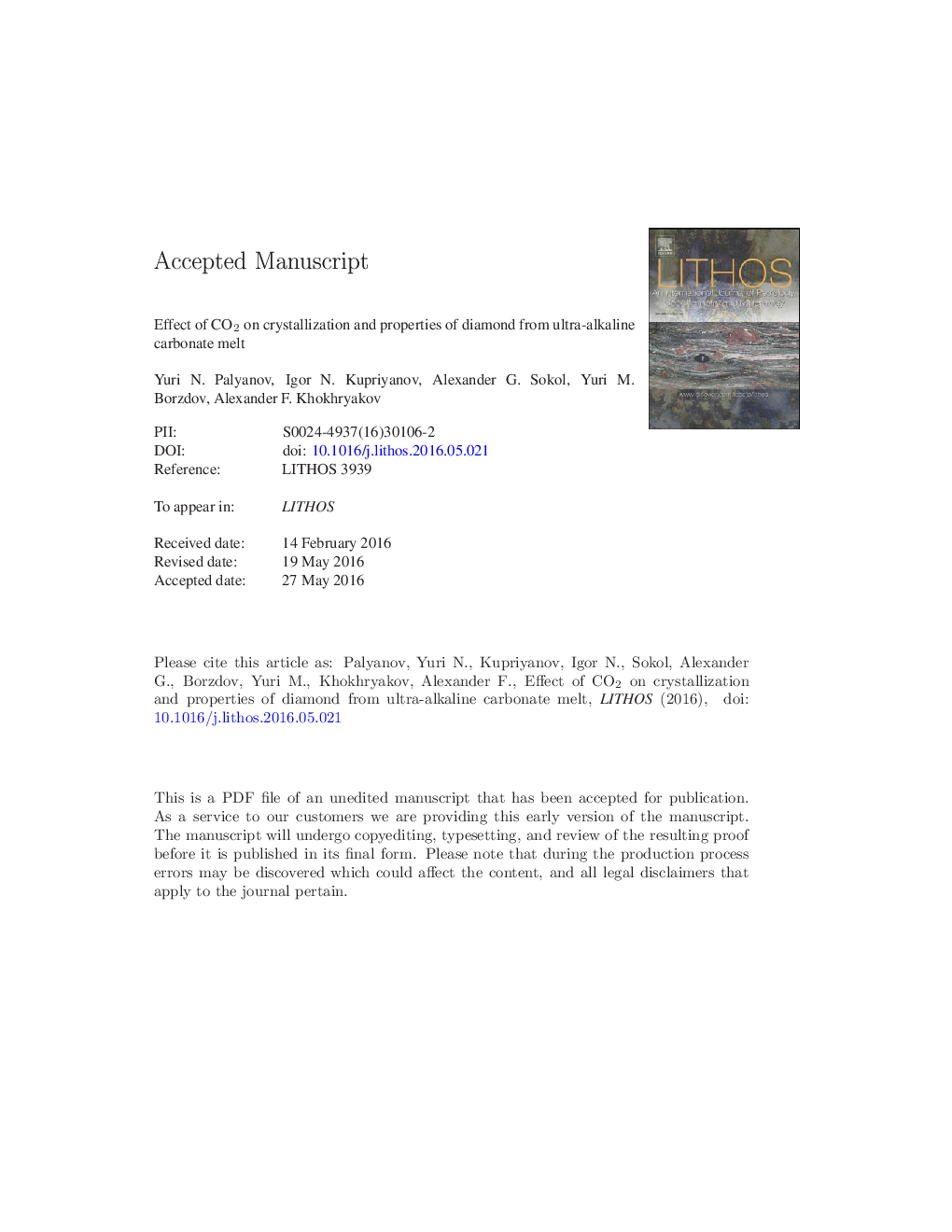| Article ID | Journal | Published Year | Pages | File Type |
|---|---|---|---|---|
| 5784324 | Lithos | 2016 | 48 Pages |
Abstract
An experimental study on diamond crystallization in CO2-rich sodium-carbonate melts has been undertaken at a pressure of 6.3 GPa in the temperature range of 1250-1570 °C and at 7.5 GPa in the temperature range of 1300-1700 °C. Sodium oxalate (Na2C2O4) was used as the starting material, which over the course of the experiment decomposed to form sodium carbonate, carbon dioxide and elemental carbon. The effects of pressure, temperature and dissolved CO2 in the ultra-alkaline carbonate melt on diamond crystallization, morphology, internal structure and defect-and-impurity content of diamond crystals are established. Diamond growth is found to proceed with formation of vicinal structures on the {100} and {111} faces, resulting eventually in the formation of rounded polyhedrons, whose shape is determined by the combination tetragon-trioctahedron, trigon-trioctahedron and cube faces. Spectroscopic studies reveal that the crystallized diamonds are characterized by specific infrared absorption and photoluminescence spectra. The defects responsible for the 1065 cmâ 1 band dominating in the IR spectra and the 566 nm optical system dominating in the PL spectra are tentatively assigned to oxygen impurities in diamond.
Related Topics
Physical Sciences and Engineering
Earth and Planetary Sciences
Geochemistry and Petrology
Authors
Yuri N. Palyanov, Igor N. Kupriyanov, Alexander G. Sokol, Yuri M. Borzdov, Alexander F. Khokhryakov,
